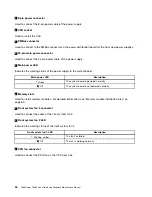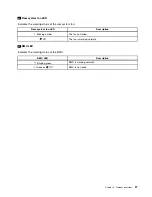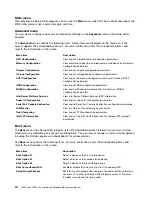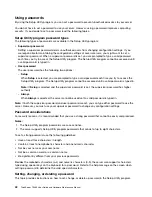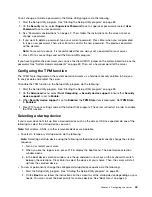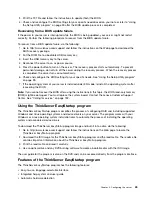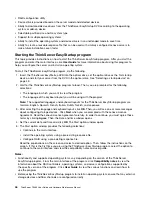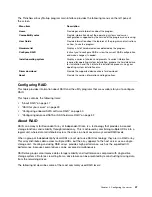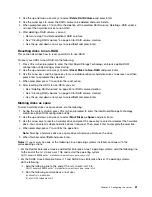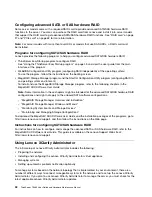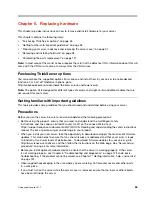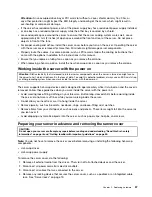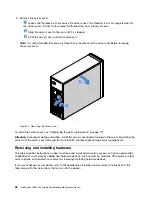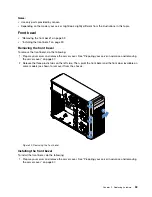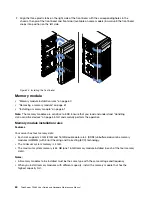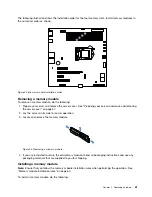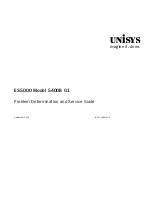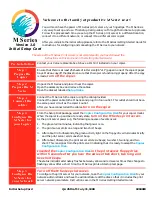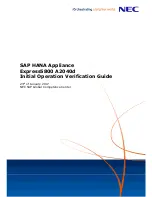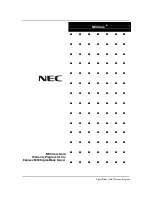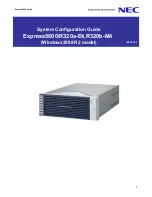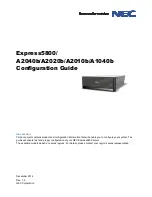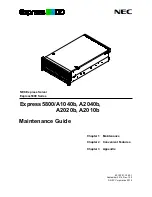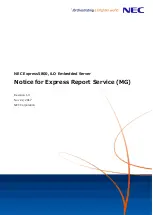
•
RAID 0
: block-level striping without parity or mirroring
Simple stripe sets are normally referred to as RAID 0. RAID 0 uses striping to provide high data
throughput, especially for large files in an environment that does not require fault tolerance. RAID 0 has no
redundancy and it provides improved performance and additional storage without fault tolerance. Any
drive failure destroys the array and the likelihood of failure increases with more drives in the array. RAID
0 does not implement error checking, so any error is uncorrectable. More drives in the array means
higher bandwidth, but greater risk of data loss.
RAID 0 requires a minimum number of one hard disk drive.
•
RAID 1
: mirroring without parity or striping
RAID 1 uses mirroring so that data written to one drive is simultaneously written to another drive. This is
good for small databases or other applications that require small capacity but complete data redundancy.
RAID 1 provides fault tolerance from disk errors or failures and continues to operate as long as at least
one drive in the mirrored set is functioning. With appropriate operating system support, there can be
increased read performance and only a minimal write performance reduction.
RAID 1 requires a minimum number of two HDDs.
•
RAID 5
: block-level striping with distributed parity
RAID 5 uses disk striping and parity data across all drives (distributed parity) to provide high data
throughput, especially for small random access. RAID 5 distributes parity along with the data and requires
all drives but one to be present to operate; drive failure requires replacement, but the array is not
destroyed by a single drive failure. Upon drive failure, any subsequent read operations can be calculated
from the distributed parity so that the drive failure is masked from the end user. The array will have data
loss in the event of a second drive failure and is vulnerable until the data that was on the failing drive is
rebuilt onto a replacement drive. A single drive failure in the set will result in reduced performance of
the entire set until the failing drive has been replaced and rebuilt.
RAID 5 requires a minimum number of three HDDs.
•
RAID 6
: block-level striping with distributed parity
RAID 6 uses distributed parity, with two independent parity blocks per stripe, and disk striping. A RAID 6
virtual drive can survive the loss of any two drives without losing data. A RAID 6 drive group is similar
to a RAID 5 drive group. Blocks of data and parity information are written across all drives. The parity
information is used to recover the data if one or two drives fail in the drive group.
RAID 6 requires a minimum number of three HDDs.
•
RAID 10
: a combination of RAID 0 and RAID 1
RAID 10 consists of striped data across mirrored spans. A RAID 10 drive group is a spanned drive
group that creates a striped set from a series of mirrored drives. RAID 10 allows a maximum of eight
spans. You must use an even number of drives in each RAID virtual drive in the span. The RAID 1
virtual drives must have the same stripe size. RAID 10 provides high data throughput and complete data
redundancy but uses a larger number of spans.
RAID 10 requires a minimum number of four HDDs and also requires an even number of drives, for
example, six HDDs or eight HDDs.
•
RAID 50
: a combination of RAID 0 and RAID 5
RAID 50 uses distributed parity and disk striping. A RAID 50 drive group is a spanned drive group in
which data is striped across multiple RAID 5 drive groups. RAID 50 works best with data that requires
high reliability, high request rates, high data transfers, and medium-to-large capacity.
Note:
Having virtual drives of different RAID levels, such as RAID 0 and RAID 5, in the same drive group is
not allowed. For example, if an existing RAID 5 virtual drive is created out of partial space in an array, the
next virtual drive in the array has to be RAID 5 only.
RAID 50 requires a minimum number of six HDDs.
48
ThinkServer TS460 User Guide and Hardware Maintenance Manual
Summary of Contents for ThinkServer TS460
Page 14: ...xii ThinkServer TS460 User Guide and Hardware Maintenance Manual ...
Page 18: ...4 ThinkServer TS460 User Guide and Hardware Maintenance Manual ...
Page 52: ...38 ThinkServer TS460 User Guide and Hardware Maintenance Manual ...
Page 68: ...54 ThinkServer TS460 User Guide and Hardware Maintenance Manual ...
Page 138: ...124 ThinkServer TS460 User Guide and Hardware Maintenance Manual ...
Page 144: ...130 ThinkServer TS460 User Guide and Hardware Maintenance Manual ...
Page 148: ...134 ThinkServer TS460 User Guide and Hardware Maintenance Manual ...
Page 160: ...146 ThinkServer TS460 User Guide and Hardware Maintenance Manual ...
Page 171: ......
Page 172: ......

